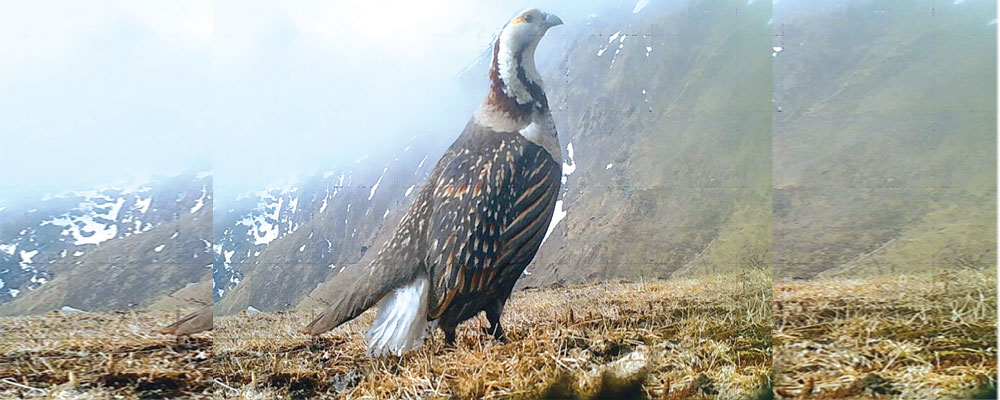- Thursday, 11 December 2025
Himalayan Snowcock spotted in Dhorpatan
Kathmandu, Feb. 27: The Himalayan Snowcock has been spotted for the first time in Dorpatan Hunting Range (DHR).
A group of researchers including Hari Sharma, Associate Professor at the Central Department of Zoology, Tribhuvan University recorded the species for the first time shedding light on its distribution and habitat preferences. “This marks the first recorded occurrence during our camera trapping for other mammal species in the DHR," said Sharma.
The Himalayan Snowcock has been a subject of interest due to its elusive nature and restricted habitat range. Typically found at altitudes ranging from 4250 to 5900 meters above sea level, the bird is known for its preference for alpine habitats near the snowline.
During a recent survey conducted in the DHR, researchers spotted the Himalayan Snowcock 34 times at 18 different locations. These sightings occurred at elevations ranging from 3757 to 4408 meters above sea level, indicating a wide distribution within the region, said the paper on Himalayan Snowcock (Tetraogallus himalayensis) in Dhorpatan Hunting Reserve published in Nepal Journals Online.
Among the various habitat types recorded, grasslands emerged as the most common, hosting 44.20 per cent of the observed individuals. Snow-covered areas followed closely behind at 26.50 per cent, while barren land and shrubland accounted for 23.50 per cent and 5.88 per cent, respectively. These findings provide valuable insights into the species' habitat preferences and foraging behaviors, Sharma said.
Although the Himalayan Snowcock is commonly found in western and mid-western Nepal, particularly in areas like Langtang National Park, sightings near Shey Phoksundo National Park and Annapurna Conservation Area have also been reported. However, confirmation of its presence in the DHR was lacking until this study.
Sharma said that there is no specific information available regarding the distribution and threats faced by the species in Nepal. A detailed study of the threats and population of the species is lacking. “Even during our current research focused on another topic, we unexpectedly captured images of this species using camera traps,” he said.
“The discovery highlights the importance of further research to better understand the distribution and conservation needs of the Himalayan Snowcock, particularly in rural areas like the DHR.
By identifying spatial locations of various faunal species, such studies can inform the development of species-specific management plans, aiding conservation efforts in Nepal,” he added.
The research team discovered numerous traps in the area, raising concerns about potential illegal hunting of the species. While the traps may not have been intended for the Himalayan Snowcock specifically, other species are also at risk of being ensnared by them, he added.
The study also underscores the need for continued scientific focus on lesser-known species like the Himalayan Snowcock, despite its classification as least concerned on the IUCN Red List. Such efforts are crucial for preserving Nepal's rich biodiversity and ensuring the long-term survival of these unique inhabitants, the research said.
















